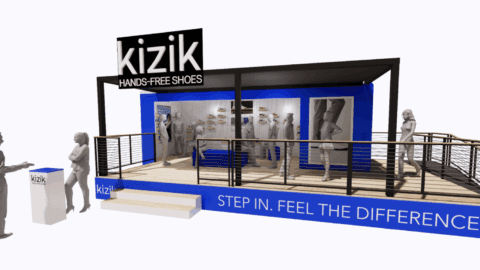Times of crisis such as the COVID-19 pandemic present an excellent opportunity to drive innovation, according to the Connecting The Dots: Driving Change Through Innovation webinar, hosted by NetElixir. Jerry Wind, Professor at the Wharton School at the University of Pennsylvania, laid out three steps retailers should follow to focus their efforts as they develop new ways to improve the business— whether that means pivoting during an emergency or simply perfecting an existing strategy.
The first step for a retailer is to determine its “mental model,” and whether that should be changed. Wind stressed that retailers need to be “disruptors” rather than “defensive players,” which calls for challenging their own existing models. However, this doesn’t mean making change for the sake of change. Rather, merchants need to consider both the best way to challenge existing models and how they need to shift in order to capitalize on available opportunities.
Once a retailer starts innovating in earnest, it needs to keep two sets of considerations in mind as it works toward the ultimate goal:
- Customers and other stakeholders: Future developments need to account for the fact that shoppers should be part of the experience, not simply the audience, and that their expectations for a retailer’s actions should be at the heart of the organization;
- Speed and scale: New innovations should enhance agility, not inhibit it, and be capable of speedy, wide-scale implementation — to ensure the benefits can be realized before it’s time to seek the next important development.
Shoppers are Now Stakeholders
One thing nearly every new innovation effort requires is reimagining and reinventing the retailer’s approach to pleasing customers. Shoppers have become much more empowered and skeptical over the past several years, and the pandemic only accelerated this change. Merchants need to experiment to find ways to design experiences with the customer, rather than designing experiences for them.
Advertisement
“Think about how we can start benefiting from co-creating experiences with the customer as opposed to doing everything and showing it to them,” said Wind during the event. “How can we co-create the experience with them? How can we create a platform that allows them to customize the product the way they want it? One thing we know about consumers is that they are all looking for real-time customized experiences. They’re really looking for real-time personalized experiences. How can we provide it for them, and what are the implications?”
Additionally, retailers need to understand that both their shoppers and their employees now see themselves as stakeholders in the company. Wind cited this as the reason for the growing importance of social responsibility — as people develop a stronger connection with the brands that impact them every day, they expect to have a strong influence on how those brands act on a larger scale.
“Whatever you’re doing, think about how you’re doing good for society,” said Wind. “It’s not just about philanthropic activity, but how you integrate these actions as part of your activities.”
Speed Matters, Especially During a Crisis
Regardless of what goal they are trying to reach, retailers must innovate with both speed and scale in mind. Fresh ideas can depreciate rapidly in a fast-moving industry like retail, and ideas that sound good on paper, but can’t be implemented on a meaningful scale, won’t make any real improvements. Innovation is important, but retailers can’t lose sight of the end goal.
Speed is doubly important for digital initiatives, as online expectations change even faster than brick-and-mortar operations. Wind cited the pandemic as recent proof of this: retailers with agile online operations were able to shift to a last mile and curbside pickup-focused model almost immediately, while those with a weaker digital presence (like many department stores) found themselves falling further behind.
“Those organizations that had the right digital infrastructure were able to respond much faster and much, much more effectively during the crisis to change and engage the audiences digitally,” said Wind. “For example, organizations such as the Barnes Foundation had a much better digital infrastructure than Philadelphia Museum of Art. As a result, they were able to engage audiences from day one, attract new audiences globally and even improve their fundraising. The same lesson applies to any organization.”
Managing all these pillars at once can be difficult for less agile retailers, but the long-term benefits go beyond the obvious. Creating a smart approach to business transformation won’t just improve the business — it will inspire the workforce and lay the groundwork to attract future talent.
“There is nothing better than experimentation throughout the operation to attract the right type of talent and create an energized organization that’s centered around innovation,” said Wind.














